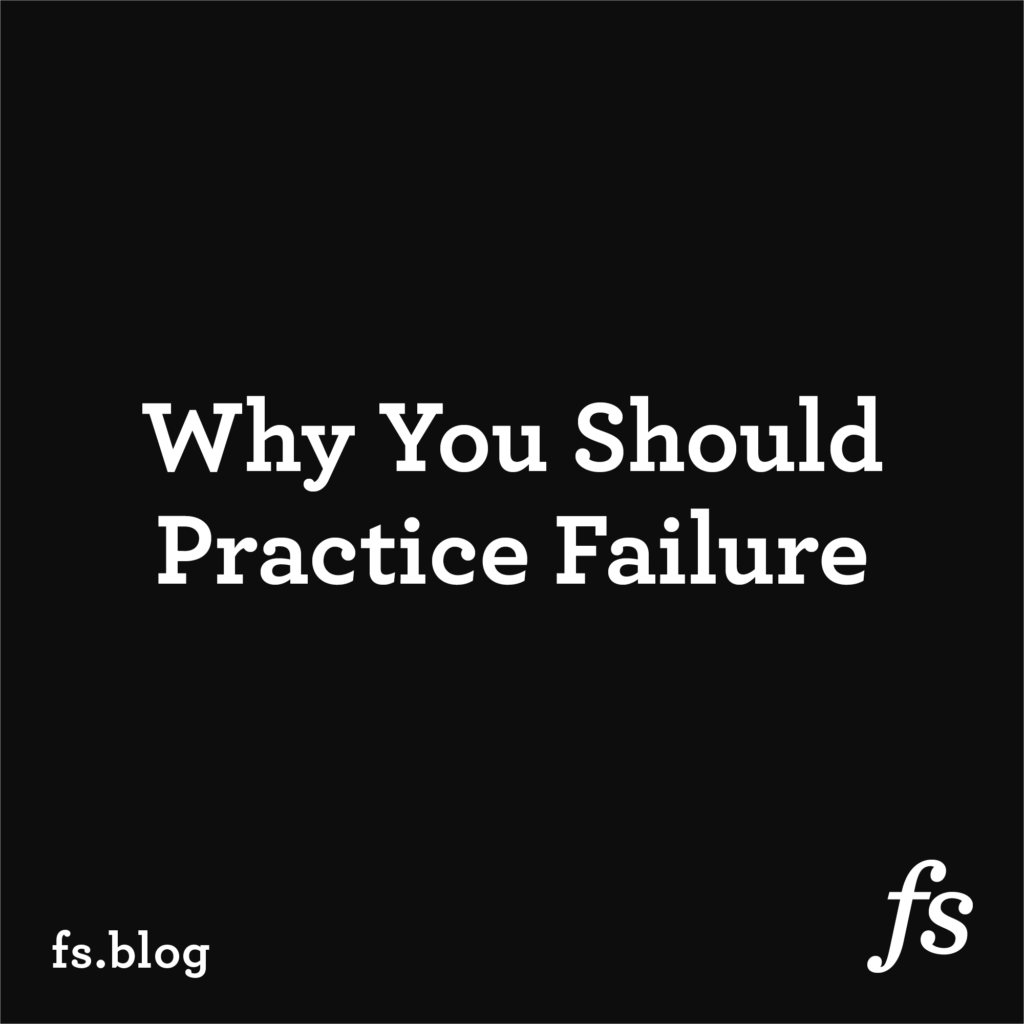Why You Should Practice Failure
Blog: FS - Smart decisions
We learn valuable lessons when we experience failure and setbacks. Most of us wait for those failures to happen to us, however, instead of seeking them out. But deliberately making mistakes can give us the knowledge we need to more easily overcome obstacles in the future.
We learn from our mistakes. When we screw up and fail, we learn how not to handle things. We learn what not to do.
Failing is a byproduct of trying to succeed. We do our research, make our plans, get the necessary ingredients, and try to put it all together. Often, things don’t go as we wish. If we’re smart, we reflect on what happened and make note of where we could do better next time.
But how many of us make deliberate mistakes? How often do we try to fail in order to learn from it?
If we want to avoid costly mistakes in the future when the stakes are high, then making some now might be excellent preparation.
***
Practicing failure is a common practice for pilots. In 1932, at the dawn of the aviation age, Amelia Earhart described the value for all pilots of learning through deliberate mistakes. “The fundamental stunts taught to students are slips, stalls, and spins,” she says in her autobiography The Fun of It. “A knowledge of some stunts is judged necessary to good flying. Unless a pilot has actually recovered from a stall, has actually put his plane into a spin and brought it out, he cannot know accurately what those acts entail. He should be familiar enough with abnormal positions of his craft to recover without having to think how.”
For a pilot, stunting is a skill attained through practice. You go up in a plane and, for example, you change the angle of the wings to deliberately stall the craft. You prepare beforehand by learning what a stall is, what the critical variables you have to pay attention to are, and how other pilots address stalls. You learn the optimal response. But then you go up in the air and actually apply your knowledge. What’s easy and obvious on the ground, when you’re under little pressure, isn’t guaranteed to come to you when your plane loses lift and function at 10,000 feet. Deliberately stalling your plane, making a conscientious mistake when you have prepared to deal with it, gives you the experience to react when a stall happens in a less controlled situation.
The first time your plane unexpectedly stops working in mid-flight is scary for any pilot. But those who have practiced in similar situations are far more likely to react appropriately. “An individual’s life on the ground or in the air may depend on a split second,” Earhart writes. “The slow response which results from seldom, if ever, having accomplished the combination of acts required in a given circumstance may be the deciding factor.” You don’t want the first stall to come at night in poor weather when you have your family in the cabin. Much better to practice stalling in a variety of situations ahead of time—that way, when one happens unexpectedly, your reactions can be guided by successful experience and not panic.
Earhart advises that in advance, the solution to many problems can be worked out on paper, “but only experience counts when there is no time to think a process through. The pilot who hasn’t stalled a plane is less likely to be able to judge correctly the time and space necessary for recovery than one who has.”
If you practice failing every so often, you increase your flexibility and adaptability when life throws obstacles in your way. Of course, no amount of preparation will get you through all possible challenges, and Earhart’s own story is the best example of that. But making deliberate mistakes in order to learn from them is one way to give ourselves optionality when our metaphorical engine stops in midair.
If we don’t practice failing, we can only safely fly on sunny days.
The post Why You Should Practice Failure appeared first on Farnam Street.
Leave a Comment
You must be logged in to post a comment.








